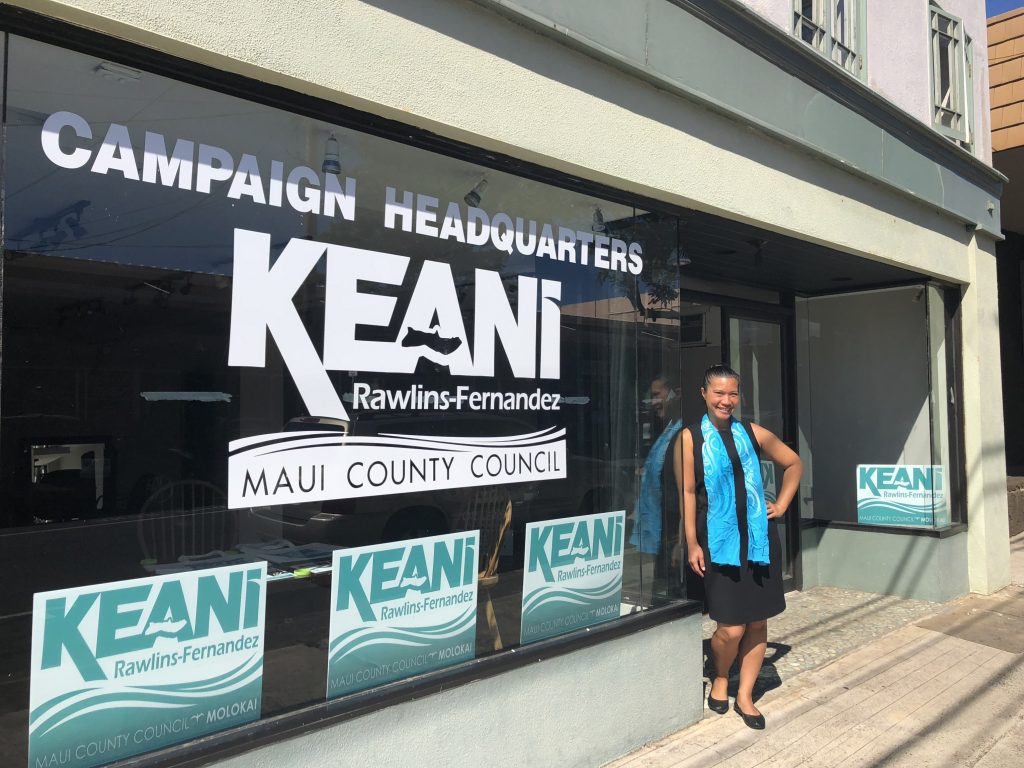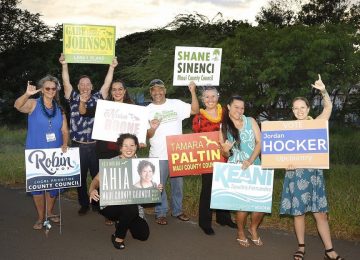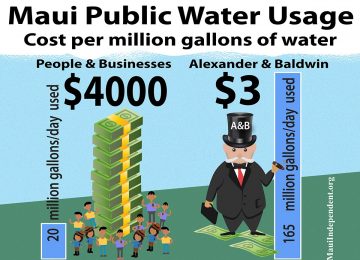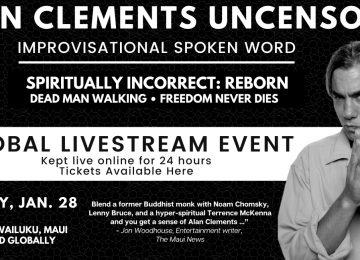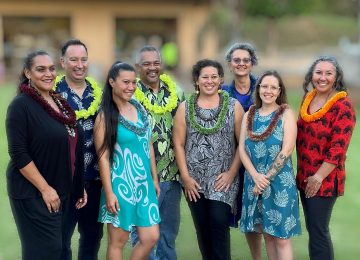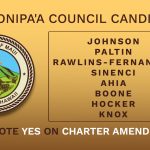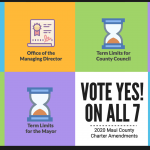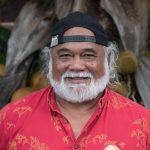For many years Maui County Council Member, Stacey Crivello, who is running for reelection next month, has positioned herself as a champion of the people of Moloka’i.
This longtime career politician, a key member of the “old guard” pro-GMO majority in Maui’s current council, is now facing questions about her support for expanding Mokoka’i’s restrictions on short-term home rentals, as well as the identity of her campaign donors, many of them off-island sources.
Of particular note is a large influx of donations on April 3 from members of an organization called the West Moloka’i Association. Although it is promoted as a Moloka’i based group of homeowners, the President, Secretary, and Director all have primary residences in Alaska.
Among other donors who also contributed to Crivello’s campaign on April 3 are a retired realtor based in California, a commercial real estate developer in Portland, Oregon, and an investment banker who operates Molokai Investments, which is incorporated in Colorado.
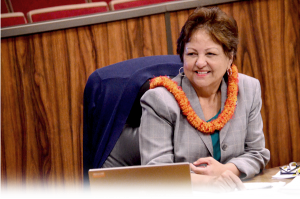
Of donations received of $100 or more by Crivello’s campaign, besides family contributions, 51% came from political action committees like the Hawaii Operating Engineers Industry Stabilization Fund, 31% came from West side investment property owners, while only 15% came from actual long-term Moloka’i residents.
In contrast, Keani Rawlins-Fernandez, who is running against Crivello for the Moloka’i seat, received no donations from west side investment property owners.
The West Moloka’i Association has been lobbying to get Maui County taxpayers to foot the bill for infrastructure improvements to a private road and water system for land parcels purchased from the owner of Moloka’i Ranch.
The battle over short-term home rentals on Moloka’i has inflamed the local populace. Last year, Crivello proposed a bill that would cap short-term rentals on Moloka’i at 40, while many islanders would prefer zero rentals.
At a Kula Community Association meeting on October 3, Crivello suggested Molokai ’s west side is more open to a limited number of rentals.
Rawlins-Fernandez, adamantly disagrees. “Our community has been inundated with short-term rentals, as has Maui,” she reports. “It’s been changing the look, the feel, the level of safety in our neighborhoods, especially on the East end (of Moloka’i). The community came out in strong support of a zero cap. Our Moloka’i Planning Commission voted to support the community’s request to recommend to the County Council a zero cap.”

Currently, there are 19 permitted short-term rentals on the island, but not unsurprisingly, all are registered to off-island mailing addresses. “Nineteen are owned by people who do not live on Moloka’i,” she explains. “One person has a Moloka’i address, but she no longer lives there.”
“We don’t have a lot of housing and our community is very tight-knit,” Rawlins-Fernandez told The Maui Independent explaining her opposition. “It’s important to us to maintain our lifestyle and the character of our neighborhoods. A lot of us still leave our cars and houses unlocked. We value the trust we have amongst each other. By having these short-term rentals they’re changing the dynamics.”
As far as the West Moloka’i Association’s influence Rawlins-Fernandez says, “they know my position on rentals. Basically, on the west end we have these two to five-acre ag lots. People not from Molokai are coming in, buying them with the intention of building an investment property and turning them into a short-term rental. They weren’t meant for that purpose. They don’t live on Molokai, they don’t live with the impact their activity is having to our island. Because of my strong position on establishing a zero cap I think they’re afraid of me getting in.”



